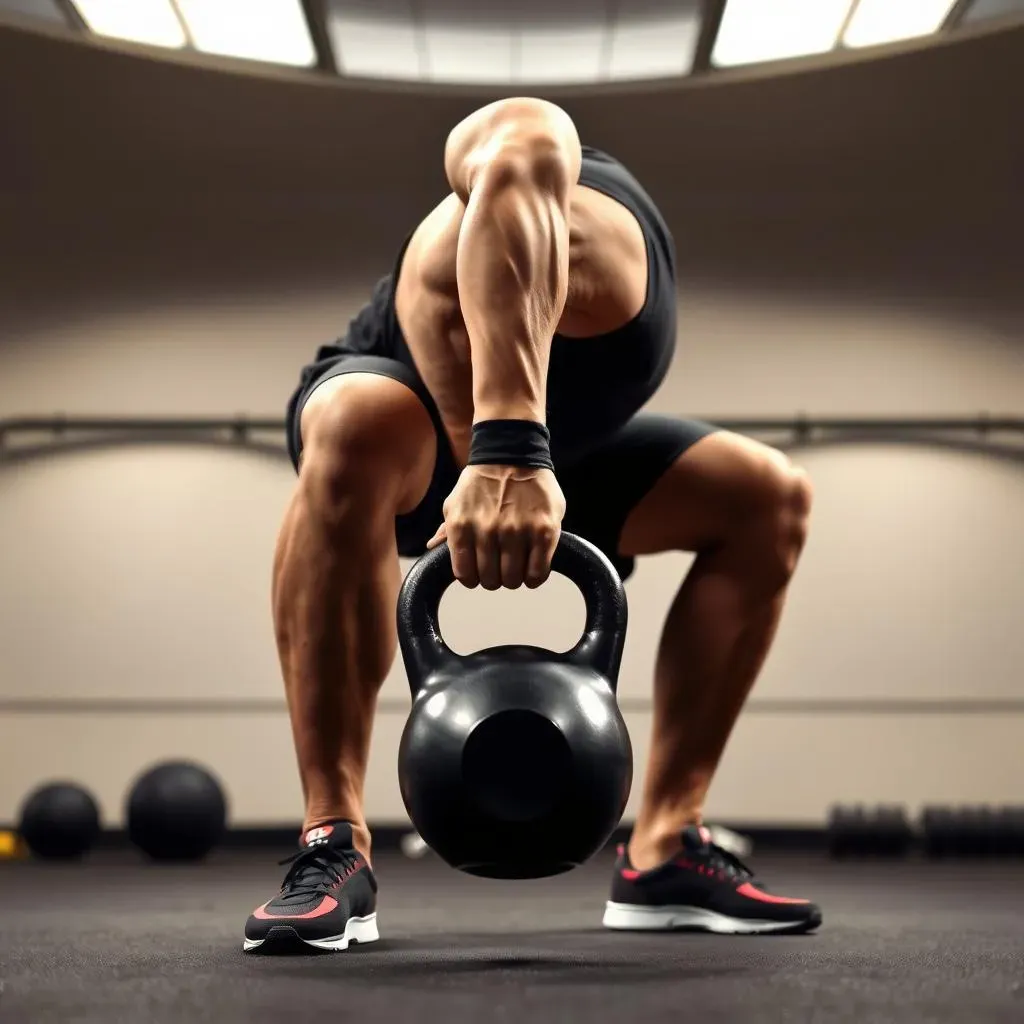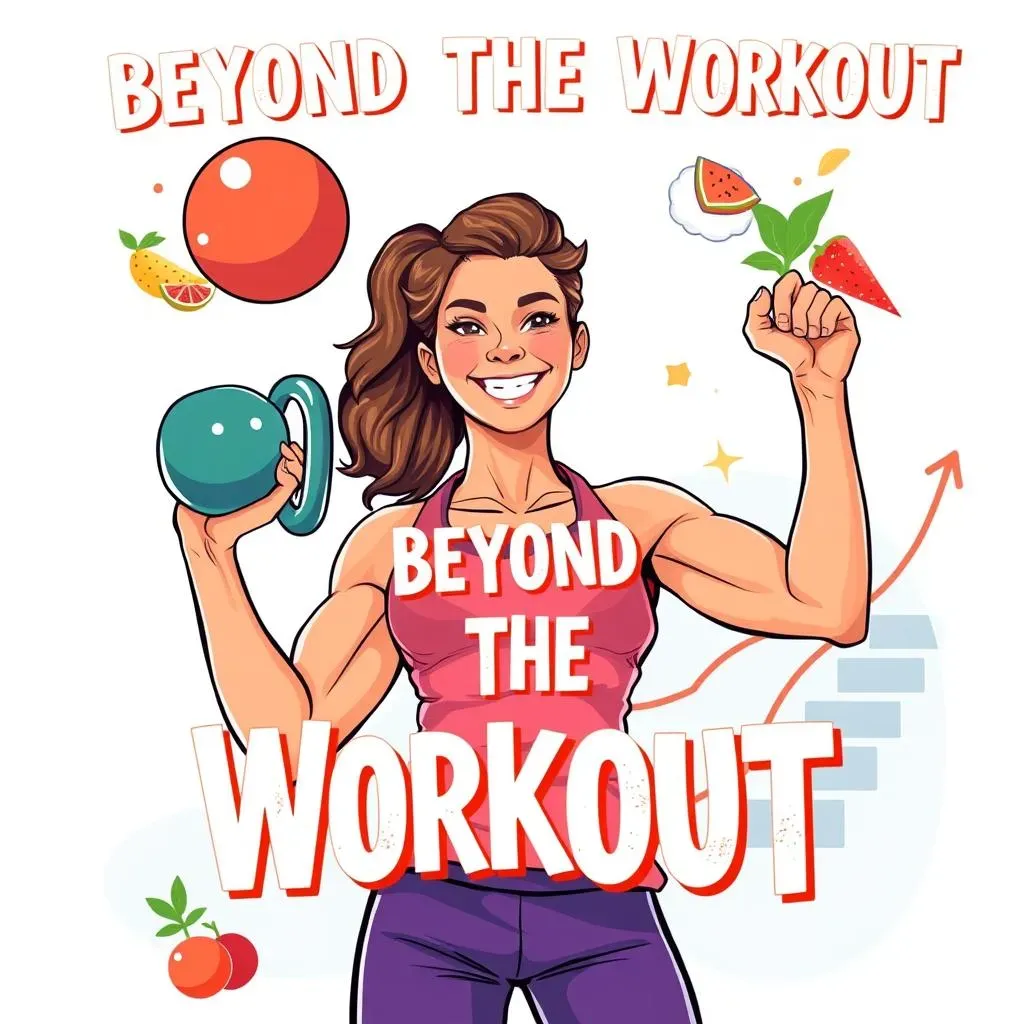Table of Contents
Ready to torch calories and build serious strength? Forget endless gym sessions; we're diving into a killer full body kettlebell workout 30 minutes that will leave you feeling powerful and energized. This isn't about complicated routines or fancy equipment; it's about getting the most bang for your buck with a single, versatile tool: the kettlebell. We'll break down the essential movements, making sure you’re not just swinging a weight, but building a body that can handle anything. This workout is about functional strength, meaning you'll see improvements in your day-to-day life, not just in the mirror. We'll get into a step-by-step routine, and I will share some tips to help you make the most of your 30 minutes. So, grab your kettlebell and let's get to work!
Mastering the Basics: Essential Kettlebell Movements

Mastering the Basics: Essential Kettlebell Movements
The Foundation: Why Basics Matter
Okay, so you're itching to swing some iron, right? But hold on a sec. Before you go all out, let's talk about the unsung heroes of kettlebell training: the fundamental movements. Think of them as the building blocks of a strong, functional body. These aren't just exercises; they're movement patterns that you use every single day, whether you realize it or not. Squatting, hinging, pushing, pulling, and carrying stuff—these are the real deal. When you nail these with a kettlebell, you are not just getting stronger, but you are also becoming more resilient and less likely to get hurt. It's like learning your ABCs before writing a novel.
Don't get me wrong, it's easy to jump straight to the flashy stuff, I've been there. But trust me, neglecting these basics is like building a house on sand. You might get away with it for a while, but sooner or later, things will start to crumble. By focusing on the core movement patterns, you'll build a solid foundation that will allow you to tackle more complex exercises with confidence and control. Plus, you'll be amazed at how much these simple moves can transform your strength and overall fitness. It is all about building your body to work for you.
Key Movement Patterns:
- Squat: Imagine sitting in a chair.
- Hinge: Think of bowing at the waist.
- Push: Like pushing a door open.
- Pull: Picture pulling a rope towards you.
- Carry: As simple as carrying grocery bags.
The Deadlift: Your Gateway to Kettlebell Swings
Alright, let’s zoom in on one movement that's the VIP of kettlebell training: the deadlift. This isn’t just about picking up a weight; it’s about learning to hinge at your hips correctly. The deadlift is the secret sauce behind a good kettlebell swing. If you can’t do a deadlift with proper form, you're not ready for the swing. It’s like trying to run before you can walk. The deadlift teaches you to engage your glutes and hamstrings, protecting your back in the process. It is a full body movement that will help you with most things in life.
Now, I know what you might be thinking: "It's just bending over." But believe me, there's more to it than that. A proper deadlift is all about maintaining a neutral spine, engaging your core, and using your legs to lift the weight. It’s a full-body movement, not just a back exercise. Mastering the deadlift will not only help you with your kettlebell swings, but it will also improve your posture and reduce the risk of back injuries. It is a movement that will help you in all aspects of life.
30Minute Full Body Kettlebell Workout: StepbyStep

30Minute Full Body Kettlebell Workout: StepbyStep
Gear Up: What You'll Need
Alright, let's get down to business. For this 30-minute full body kettlebell workout, you're going to need a few things. First, grab three kettlebells, each of a different weight. I'm talking a light one (maybe 5-10 pounds), a medium one (around 15 pounds), and a heavier one (20-25 pounds). Don't stress too much about the exact weights; just pick ones that feel challenging but not impossible. You want to be able to maintain good form throughout the workout. It's better to start a bit lighter and focus on form than to go too heavy and risk injury. Remember, this is about building strength, not ego lifting.
Besides your kettlebells, you will need a timer, a little bit of space, and maybe some music to keep you pumped. Make sure you have enough room to move around without bumping into anything. You do not need a fancy gym or specialized equipment. This workout is designed to be simple and effective, and you can do it at home or at your local park. The most important thing is to make sure you are in a place that will allow you to focus on the movements. Make sure to have some water close by, this workout will make you sweat a lot.
The Workout: Five Exercises to Rule Them All
Okay, here's the deal. We're going to hit five key exercises in this 30-minute full body kettlebell workout. Each one is designed to work different muscle groups and get your heart rate up. We're talking kettlebell swings, single-arm overhead presses, sumo squats, single-arm rows, and rack carries. We will be doing each exercise for a set period of time, and then move to the next one. Remember to focus on proper form over speed; it’s better to do fewer reps correctly than to rush and get hurt. The goal is to move with control and intention.
We'll be using a high-intensity interval training (HIIT) style format. This means you'll be doing short bursts of intense work followed by short rest periods. This is a great way to burn calories and build strength at the same time. Remember to listen to your body, and if you need to take a longer break, do it. The goal is to work hard, but not to push yourself to the point of exhaustion or injury. This workout is designed to be challenging but fun, so let's get after it. The idea is to make your body work for you.
Exercise | Weight | Time |
|---|---|---|
Kettlebell Swing | Medium | 45 seconds |
Single-Arm Overhead Press (Right) | Light | 30 seconds |
Single-Arm Overhead Press (Left) | Light | 30 seconds |
Sumo Squat | Heavy | 45 seconds |
Single-Arm Row (Right) | Medium | 30 seconds |
Single-Arm Row (Left) | Medium | 30 seconds |
Rack Carry | Medium | 45 seconds |
Rest | None | 15 seconds |
Putting It All Together: The Flow
So, how does this all come together? You will start with the kettlebell swings, performing them for 45 seconds. Then, you will move to the single-arm overhead press, doing 30 seconds on each side. Next, it is time for the sumo squats for 45 seconds, then the single-arm rows, again 30 seconds on each side, and finally the rack carry for 45 seconds. After the last exercise, take a 15-second rest before starting the next round. You should repeat this circuit 3-4 times. The idea is to keep moving with good form, taking small breaks when you need to. Remember to always focus on quality over quantity.
Remember, this 30-minute full body kettlebell workout is designed to be a guide. It is important to listen to your body and adjust it as needed. If you need to take a longer break, do it. If you need to shorten the workout, do it. If you want to add more rounds, go for it. The most important thing is to find a workout that works for you and that you enjoy. Consistency is key; do this workout 2-3 times a week, and you will start to see results. The goal is to build a body that works for you and that you enjoy moving.
Beyond the Workout: Maximizing Your Kettlebell Results

Beyond the Workout: Maximizing Your Kettlebell Results
Fueling Your Body: Nutrition and Recovery
Alright, you've just crushed that full body kettlebell workout 30 minutes, feeling awesome, right? But the journey doesn't end when you put the kettlebell down. What you do outside of your workout is just as important as what you do during it. Think of your body like a high-performance machine; it needs the right fuel to run smoothly and recover properly. So, let's talk about nutrition and recovery. Eating a balanced diet with plenty of protein, healthy fats, and complex carbs will help your muscles repair and rebuild. Don't forget to hydrate, too; water is your best friend after a tough workout. It's not just about eating less; it's about eating smarter.
Recovery is the other piece of the puzzle. You can't just go hard all the time; your body needs time to rest and recover. This is when your muscles actually get stronger. Make sure you are getting enough sleep, at least 7-8 hours a night. You could also consider some active recovery, like light stretching or a walk, to help reduce muscle soreness. Ignoring recovery is like skipping oil changes in your car; it might run for a while, but eventually, things will break down. So, take care of your body, and it will take care of you. Remember, consistency and balance are the keys to long-term fitness success.
Recovery Tip | Description |
|---|---|
Sleep | Aim for 7-8 hours of quality sleep per night. |
Hydration | Drink plenty of water throughout the day, especially after a workout. |
Nutrition | Eat a balanced diet with protein, healthy fats, and complex carbs. |
Active Recovery | Do light activities like stretching or walking on your rest days. |
Making It a Habit: Consistency and Progression
Now, let's talk about making this a long-term thing. It's easy to get excited and go all-in for a few weeks, but the real magic happens when you make it a habit. Consistency is key. Try to stick to your workout schedule as much as possible, even when you don't feel like it. Remember, it's about progress, not perfection. Some days will be better than others, and that’s okay. Don't beat yourself up if you miss a workout; just get back on track the next day. Building a fitness routine is like building a house, you can't build it in one day, you need to work on it little by little.
And as you get stronger, don’t be afraid to challenge yourself. Maybe you can increase the weight of your kettlebells, the number of rounds, or the time for each exercise. The goal is to keep pushing your limits and making progress. But always remember to prioritize form over quantity. It's better to do less with good technique than more with poor form. It is a marathon, not a sprint. The goal is to make your body work for you and to enjoy the process. Find a way to make your workout something you look forward to, not something you dread. You got this!
“The only way to do great work is to love what you do.” - Steve Jobs